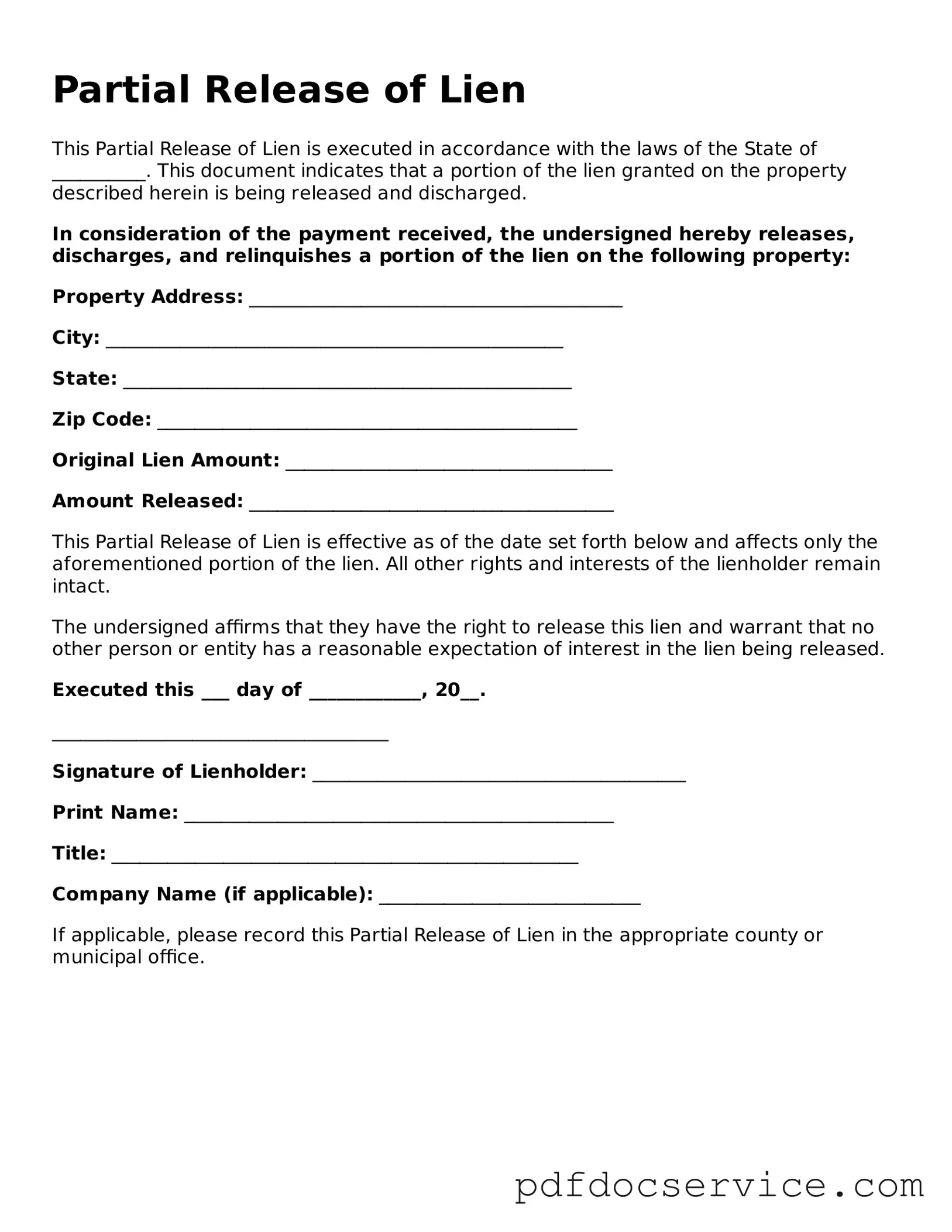Blank Partial Release of Lien Form
The Partial Release of Lien form is a legal document that allows a property owner to remove a lien from a specific portion of their property while keeping the remaining lien in place. This form is often used in construction projects when a contractor or supplier has been paid for part of their work but retains a lien for unpaid amounts. Understanding how to properly complete and file this form is essential for both property owners and contractors to protect their interests.
Open Partial Release of Lien Editor
